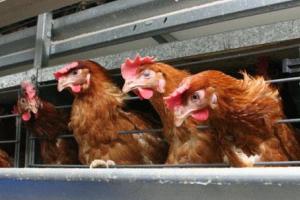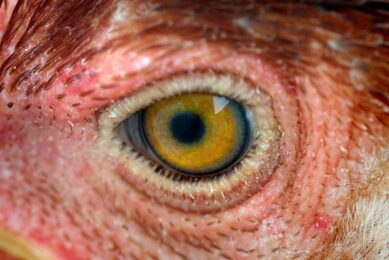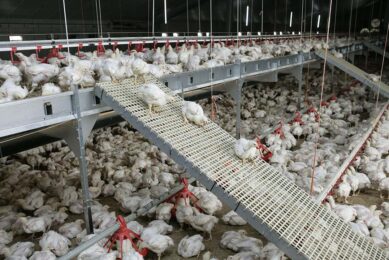CSES studies alternative hen housing under US conditions

The Coalition for Sustainable Egg Supply (CSES) has finished the first phase of a two-year study on alternative housing systems for laying hens under commercial American farm conditions, Feedstuffs reports.
The interim findings presented from Flock One of the CSES Laying Hen Housing Research illustrate the tradeoffs that exist between housing systems in impact to the environment, animal health and well-being and food affordability.
The three-year, two-flock study, being conducted on a commercial farm with three housing types in the same location, is assessing five areas of sustainability:
1. Animal health and well-being,
2. Environment,
3. Food affordability,
4. Food safety, and
5. Worker health and safety.
The three housing systems being studied: cage-free aviary, enriched cages and conventional cages.
“The preliminary findings from Flock One have produced intriguing data. The findings have illuminated opportunities to integrate data between the different areas of sustainability to better understand each housing system and its impact,” stated Dr. Janice Swanson, professor and Director of Animal Welfare at Michigan State University and co-scientific director for the project.
Environment
The Environment research is evaluating and comparing indoor air quality, emissions from the houses and from manure storage, and production efficiency, including feed, water and energy use.
The conventional and enriched houses were found to have very good indoor air quality, with ammonia and dust levels being very low.
The aviary ammonia levels tended to be 1.5 to 2 times as high, likely due to manure on the floor not being removed until the end of the flock.
“This could be corrected with higher ventilation rates but that will use more energy, illustrating some of the tradeoffs between systems,” said Dr. Hongwei Xin, professor at Iowa State University and Director of the Egg Industry Center.
In addition to differences in manure handling, dust-bathing and foraging in the aviary system, where the hens scratch and flap their wings in bedding on the floor, generates additional dust, eight to 10 times more than in the enriched or conventional houses. Ongoing research will assess whether this impacts worker or hen health.
Aviary high in ammonia
Similarly, ammonia and particulate matter emissions from the houses were highest for the aviary house, followed by the conventional house and the enriched house. Methane emissions for all housing systems were similar and quite small.
Electricity use was similar across all three systems. The aviary house also used a small amount of supplemental heat (from propane), although the winter during the monitoring period was milder than normal.
Animal health and welfare
“As other studies have indicated, each system has its own advantages and shortcomings in providing appropriate health and well-being for the hens,” said Dr. Joy Mench, professor and Director of the Centre for Animal Welfare at University of California Davis and co-scientific director of the project.
Hens in the enriched system experienced more fractured wings and legs during placement into the house. Hen mortality over the life of the flock was much higher in the aviary system due to conditions associated with egg production and behavioural issues with hens either being excessively pecked, or picked out (vent).
When compared to birds in the conventional system, those in aviary and enriched systems both had a higher incidence of keel (breast bone) deviations. The hens in conventional cages had the highest incidence of foot problems, mainly hyperkeratosis. When hens in the aviary had foot problems they were more severe than those in conventional or enriched cages.
Conventional and enriched hens had cleaner feathers but worse feather cover than aviary hens. Hens with large areas of feather loss lost more body heat than better-feathered hens.
Patterns of feather loss suggested that hens in conventional and enriched systems lost feathers due mainly to abrasion against the cage, while those in the aviary system lost feathers due to aggressive pecking from other birds.
Cost analysis
“One of the useful features about this research is that it is being done in commercial-size and commercially operated houses,” said Dr. Daniel Sumner, University of California Davis agricultural economics professor and Director of the University of California Agricultural Issues Centre.
“Data from Europe are from smaller houses and are not comparable to the US situation. And we don’t ever have economic and affordability data on experimental flocks, so quite reasonably no one has done this type of economic analysis before,” he said.
Sumner is leading the economics and food affordability research component. “We’re not done slicing the data all the ways we will, but we are seeing real cost differences that are likely to be important if people implement these alternative housing systems.”
On the basis of per dozen eggs, overall costs are highest for eggs produced in the aviary system, followed by those from enriched housing and then by conventional housing. Annual operating costs – feed, pullet and labour costs – were highest in the aviary system, while the other two houses were lower, and similar to each other.
Feed comprises the largest share of operating costs. “While the price of corn and soybeans have been historically high, we are not likely to see those prices go back down to where they were before 2007, so feed cost differentials will remain particularly important,” Sumner said.
Capital costs per dozen eggs were much higher for aviary and enriched systems than conventional due to the cost of the barns and equipment and the smaller scale of those houses.
Source: Feedstuffs
Join 31,000+ subscribers
Subscribe to our newsletter to stay updated about all the need-to-know content in the poultry sector, three times a week. Beheer
Beheer








 WP Admin
WP Admin  Bewerk bericht
Bewerk bericht